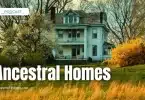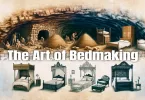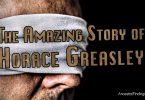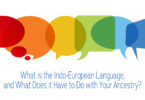It is nice to think that there may be some royalty in our family trees. It makes for an interesting conversation topic with friends and family. It also makes us feel special to know we have ancestors who were kings and queens… carrying that DNA isn’t something just anyone can boast of. Or, is it? While only a very small percentage of us may be able to prove royal ancestry with paperwork (or, in even fewer cases, DNA testing), mathematicians have produced a pretty good model that practically proves we all have to be descended from royalty, whether we can prove it on paper or not. Somewhere, in the deep depths of your family tree, are the great and well-known leaders of the Medieval and/or ancient world.
How is this possible? It takes a little explaining, but once you understand the basics of it, it does make sense. Scientists are now saying virtually everyone with European ancestry is descended from the great 800 AD-era ruler, Charlemagne. And, almost everyone with Asian ancestry can claim descent from Genghis Khan. Go back even further, and most people on the planet, except possibly Native Americans and Aboriginal Australians, can claim descent from ancient Egyptian royalty like Nefertiti or Rameses III.
You see, there is a paradox in genealogy, and mathematicians look at this paradox as a puzzle to be solved. The paradox is one of numbers. You start with you on a family tree chart; as you go back, each generation doubles in numbers, from your two parents to your four grandparents, eight great-grandparents, 16 great-great-grandparents, 32 great-great-great grandparents, and more. By the time you reach Charlemagne, that famous guy who united the Frankish kingdoms into one united France, you should have more than a trillion ancestors on your family tree.
Only, that’s not possible. A trillion people are more than were living on Earth at the time of Charlemagne. It’s more than are here now. If you added up all the humans you still probably wouldn’t have a trillion people. So, even though you should have more than a trillion ancestors on your family tree by the time you reach Charlemagne’s time in the 800 A.D.’s, you don’t. How is this possible? Where did all the missing people go?
According to mathematics, they overlapped. You have probably come across this on your family tree before if you have gone back more than a century or two, and especially if those ancestors lived in the same geographic area for a long time. You will find the same couple appearing on your family tree as great-plus grandparent in the same generation, or as 3rd, 4th, 5th, and more great-grandparents to you, via different family lines. Quite a few of your family lines probably go back to the same couple at different points (at which point, your family tree software should allow you to merge the lines). The thing is, that overlapping, where cousins marry cousins, giving you the same great-whatever grandparents many times over, happens a lot more in history than you may think. Your family tree is not a tree or a fan at all; it is more like a web or a tapestry. It gives you a whole new way of looking at your ancestry.
This web doesn’t even have to mean first cousins marrying first cousins in every generation (or most generations); in fact, most of the time, the cousin relationships in your genealogy will be far more distant than that… though it was not uncommon until quite recently in human history for first cousins to marry. A good example is my own Perkins family line, which came directly to Massachusetts from England and stayed there. I have a friend who also has a Perkins line, but from much more recently in history than my own, and that is from upstate New York. Since Perkins is a fairly common name, we never suspected any connection. However, last year, while working on that line, I connected both my line and my friend’s purely by accident. Both Perkins families originate in the English colonies with the same Perkins couple.
As you go back farther in time, you find this crossing of family lines happening far more often. And then, you get to a point where any one person alive in the past who had any descendants, is the ancestor of every one of that ethnicity in the world today. Go back even farther, and you will eventually find an ancient person whose identity is probably lost to time, who had descendants, and who is the ancestor of every person alive on Earth today, regardless of ethnicity.
Some interesting mathematical models show every one of European descent having a common ancestor who lived in about the year 1400 somewhere in Europe. If you go back a bit farther, to Charlemagne’s time, the model shows twenty percent of Europeans alive at Charlemagne’s time have no descendants living today… they either did not have children, or their children’s lines died out. The other eighty percent alive at Charlemagne’s time in Europe DO have living descendants today.
Studies of DNA have proven this mathematical model to be true. Using common DNA segments among Europeans to determine their most recent common ancestor shows that everyone who was alive during Charlemagne’s time who had any descendants has living descendants today. Since Charlemagne was known to have had much progeny from a few different wives, this means every European from Turkey to England alive today is a descendant of the great, historically famous, and royal Charlemagne.
So, that royal ancestry you’ve been dreaming about and hoping to find? You have it. You are royal. We all are. Go back far enough, and the whole planet is descended from royalty in some part of the world or other. The only question is… if you want to join a royal descendants lineage society… can you prove it on paper?






